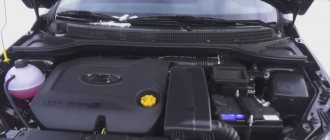During the winter season, many car owners experience a drop in network voltage. Most often, the responsibility for this lies with the generator, which cannot operate at full capacity.
How to solve this problem without harming the overall electrical system of the car is of interest to motorists. The easiest and safest way is to install a diode with a toggle switch. This operation can be done by almost every car enthusiast. Despite its simplicity, this reliable method is effective and reliable.
How to increase the voltage of a VAZ-2114 generator: increasing power
As you know, additional equipment is often installed on a car, which draws additional voltage from the on-board network.
Thus, the voltage indicator on a VAZ-2114 can drop to a critical level of 11 volts. If you also install additional air conditioning or heated seats, this may result in the starter not having enough power to start the engine. How to fix the problem? Make sure that the voltage in the on-board network increases. Video about increasing the voltage in the on-board network on VAZ cars:
The video will tell you how to increase the voltage of the generator and on-board network with your own hands, and will also tell you about some of the nuances and subtleties of the process
We increase the voltage - all options for solving the problem
Voltage in the on-board network after modification
So, many motorists may decide that the way out of this situation is to install a high-power generator, but at the same time they will have to replace the battery with a more capacitive one. This is done in order not to “kill” the battery that is installed on the car, since a voltage overload will lead to the destruction of the internal cells. This option is not suitable because it is too expensive.
The second option is to install an additional diode from another diode bridge or marked KD202V. This is much cheaper than changing the generator and battery, but you will have to tinker a little. To begin with, it is recommended to study automobile electrical circuits and the operation of the generator, as well as the charging circuit.
Installing the KD202V diode into the generator
When everything is ready, we proceed directly to installing the diode in the generator to increase the voltage in the on-board network. Let's consider the sequence of actions:
- Remove the back cover of the generator.
Remove the back cover from the generator
We take pieces of wire and solder them.
Wires and diode to increase voltage
- We solder the diode and wiring. View of soldered wires and diode View of soldered diode from the other side
- We install a limiter for the male and female wires.
- We connect the diode to the voltage regulator. We connect the diode to the voltage regulator
- We mount a regulator with a diode.
Installing heat shrink for male and female wires
We install a wire limiter for the diode.
Installed heat shrink for the soldered part
We install a voltage regulator with a diode in the generator
We assemble the generator and also connect it.
We put the back cover on the generator and take out the wires
As the measurements showed, after such an improvement, the voltage in the loaded network was 12.2-12.5 volts.
Electrical diagrams and indicators
To increase the voltage even more, at least to 14 volts, it is necessary to install a diode in circuit D, the voltage regulator. Any diode with a breakdown voltage of 20V and a current of at least 5A is suitable. The voltage drop is preferably no more than 0.6-0.7V. The 2D219B diode is excellent.
Uform(V)Ipr(A)Upr(V)Iarb(mA)Housing
| 2D219A | 15 | 10 | 0.6(10A) | 20 (15V) | KD-11 |
| 2D219B | 20 | 10 | 0.6(10A) | 20 (20V) | KD-11 |
| 2D219V | 15 | 10 | 0.45(10A) | 20 (15V) | KD-11 |
| 2D219G | 20 | 10 | 0.45(10A) | 20 (20V) | KD-11 |
Let's look at the circuit diagrams of diodes:
Manufacturing and installation of a diode in a VAZ-2114 generator
Now that everything is ready, we install an additional diode, more powerful than the previous one. You will need half a meter of wire 2*0.75mm. We solder the ends to the female and male terminals No. 4. We dress them in cambric, or better yet, in heat shrink. By the way, the old one must be removed from the system. Let's take action:
- Now, solder the following circuit to the diode: mother to the cathode, folder to the anode.
Diode to increase voltage - We insulate the diode. For example, we take a film container.
Solder the wires to the diode
We insulate the diode using a plastic container - We remove the “minus terminal” from the battery.
- We unscrew the “+” wires from the generator, disconnect the “D” wire to the tidy.
- Remove the generator cover.
Remove the back cover from the generator
Through the slots in the cover, we connect the “mother” to the LV, the “father” to the standard wire.
Connect the wires going to the diode
We carry out the assembly.
We attach the diode where there is enough wire and assemble the generator
Now, everything is ready for the final check and measurements.
Final voltage measurements and results
After the installation was completed and the entire electrical circuit was working, voltage measurements were made at idle speed of the running engine. The results surpassed themselves; the voltage in the entire electrical circuit increased.
About regulators
Structurally, tablets that control the voltage in the generator are capable of increasing the current to 13.6 volts. It is known that there are two schemes for connecting the regulator: old and new.
The old circuit is a more reliable option, which does not increase the voltage too much, but also does not allow it to drop to critical values. But the new one - although it is completely copied from the old one, has many shortcomings.
Chronic undercharging of the battery is precisely the drawback of the new scheme. Starting the engine becomes problematic in the cold season. Owners have to install preheaters or come up with something else.
Poor quality regulators force the battery to absorb energy only in the summer, i.e., at above-zero temperatures. In winter, especially if you make short trips by car, the battery does not have time to warm up, at least to 0, and periodically discharges.
Experienced motorists recommend driving for at least 20-30 minutes in winter to restore the battery.
So how is the problem solved? Obviously, the best option is to increase the voltage in the on-board network, but how to do this? It is necessary to make the tablet “believe” that there is supposedly low voltage in the network. Thus, we will ensure that the gene produces the missing voltage.
Low voltage in the vehicle's on-board network can be caused by the presence of a large number of consumers. For example, if you use a powerful speaker system with a subwoofer and amplifier, voltage dips are inevitable.
Instead of a diode, you can also use special regulators that produce three voltage values, depending on the air temperature: 13.2, 13.9 and 14.5 volts. There are three modes: summer, spring/autumn and winter.
We recommend viewing the table, which shows data on the normal charge of the battery and the standard operation of the generator.
| Battery charge level | Charge the battery with a charger | Generator operation |
| 12.72 volts - 100% | If the EMF is less than 12.6 V | norm - from 13.6 V - to 14.4 V |
| 12.50 volts - 75% | Uload - less than 9 V (load fork) | less than 13.6 V – undercharge (bad) |
| 12.35 volts - 50% | Electrolyte density—less than 1.25 g/cm | more than 14.4 V – overcharge. (also bad) |
| 12.10 volts - 25% |
The effectiveness of the diode, which increases the voltage in the on-board network, is beyond doubt. Almost all experienced motorists and owners of domestic models do this. After this, the car will be easy to start not only in summer, but also in winter. High current – accurate charging.
How to increase the generator charge using an additional diode
Many motorists have encountered the concept of low voltage in the network. The culprit of the situation was the generator, which produced an insufficient amount of current. Is there any way to increase the voltage produced by the unit? How to increase the power of the generator without damaging the circuit and the overall system.
Diode in the circuit
Installing a diode with a toggle switch is the easiest way to increase the voltage. There is no need to bother, look for a lot of information in books, etc. Everything is as accessible as possible, no special difficulties.
This option of increasing the voltage, despite its simplicity, gives the most reliable result. Ideally suited for domestic and VAZ car models.
The purpose of this method of increasing the voltage in the vehicle's on-board network is to deceive the regulator, which is located inside the generator. As you know, on old domestic car models (kopek, VAZ 2105, etc.) the voltage drop sometimes reaches critical values - sometimes it drops to 12.5 volts. The battery, of course, will not be charged at this voltage.
A voltage regulator is the same brushes, a tablet, a chocolate bar - there are many names, but it is the same element that is responsible for regulating the voltage in the generator. On our domestic cars, mostly older ones, the tablets are of poor quality. They do not regulate voltage well, and as mentioned above, sometimes the current value drops below the baseboard.
So, what you need to do is insert an additional diode into the circuit. By this we will achieve the following: by how much the voltage on the diode is reduced, the regulator will increase the total current in the circuit.
There are several ways to integrate a diode. One of the best - remotely. Take a simple toggle switch and install it somewhere convenient.
Obviously, the toggle switch should be routed through the wire to the generator. You can insert the diode into the slot in the generator bridge, in the place where the wiring runs from the excitation winding to the regulator. That is, we simply insert the diode into the wiring between the bridge and the regulator.
We connect a separate toggle switch to the diode through two wires, as shown in the photo below.
When the voltage in the on-board network is sufficient, for example, in the summer, the diode is simply installed and not used. If the current is low, just turn on the toggle switch by activating the diode. In this way, we deceive the regulator.
The following diodes can be used.
Their analogues, for example, imported ones, are also suitable. They are much more compact, made of plastic (body). Domestic - metal.
Using a diode, you can provide a voltage drop of 0.9 or 1.2 volts. Thus, if the drawdown reaches 13-13.6, then approximately 1 volt will be added by the regulator. This is normal for winter loads. The standard drawdown of the regulator should be up to 13.8 volts, not lower. At this value, the battery can still charge, but if the voltage is lower, it won’t.
A drop in voltage below standard values for modern calcium batteries is especially critical. The fact is that low drawdown kills such batteries; they deteriorate. Naturally, an increased voltage indicator is not recommended. It should be no more than 14.6 volts (more about this in the table at the end of the article).
Installing a diode in a circuit is a universal solution that gives good results. However, there are some important points to keep in mind:
- Observe polarity when connecting an additional diode. If you break this rule, the battery will not be charged.
- The diode must be selected so as to deliver a current of at least 5 A.
- It is advisable to install the diode outside the generator, as it will get very hot.
- Silicon diodes are considered more efficient. They are capable of taking voltage within 0.8-1.2. But germanium diodes are no more than 0.7 volts.
About regulators
Structurally, tablets that control the voltage in the generator are capable of increasing the current to 13.6 volts. It is known that there are two schemes for connecting the regulator: old and new.
The old circuit is a more reliable option, which does not increase the voltage too much, but also does not allow it to drop to critical values. But the new one - although it is completely copied from the old one, has many shortcomings.
Chronic undercharging of the battery is precisely the drawback of the new scheme. Starting the engine becomes problematic in the cold season. Owners have to install preheaters or come up with something else.
conclusions
Increasing the voltage of the VAZ-2114 generator with your own hands is real and quite simple. At the same time, the cost amounted to 500 rubles . It is worth noting separately that if you do not have the necessary skills or abilities to work with automotive electronics, then you should contact a car service center, where everything will be done quickly and efficiently, and of course, at the expense of the car enthusiast.
Many motorists have encountered the concept of low voltage in the network. The culprit of the situation was the generator, which produced an insufficient amount of current. Is there any way to increase the voltage produced by the unit? How to increase the power of the generator without damaging the circuit and the overall system.
Increasing the generator charging voltage
The topic may not be new, but it is still relevant today. There are many ways to increase the battery charging voltage described online. I don’t claim authorship, but I haven’t seen this method and I want to share my experience in remaking the generator “tablet”.
As you know, in winter, when consumers are turned on, the voltage of the on-board network drops to 12.8-13.5 V and, accordingly, undercharges the battery. I went, as I believe, along the least path of resistance, by including a voltage booster in the electronic circuit of the stabilizer (tablet).
Zener diode VD1 ensures stabilization of half the excitation voltage of the generator, so when a diode is added, an additional voltage drop occurs on it, which ensures that the generator excitation voltage is turned off at a higher voltage.
Well, now how to implement all this in practice.
Take the relay regulator, drill out the rivets and remove the cover.
Carefully remove the compadum from the board, using a screwdriver or a stiff brush. The zener diode we need (for those who are not entirely familiar with radio engineering) is a glass cone with a strip. The strip designates “Minus”. We unsolder the zener diode and solder a minus to minus diode to it. We solder the resulting assembly back.
This is what happened. Next, fill everything with sealant and close the lid. Can be duplicated with screws.
When using a 1n004 diode, the charging voltage without load is 14.8 volts. With all consumers turned on, 13.8 -14.2 V.
Author; Alexander Rodin Shchelkovo, Moscow region
As you know, additional equipment is often installed on a car, which draws additional voltage from the on-board network. Thus, the voltage indicator on a VAZ-2114 can drop to a critical level of 11 volts . If you also install additional air conditioning or heated seats, this may result in the starter not having enough power to start the engine. How to fix the problem? Make sure that the voltage in the on-board network increases.
Video about increasing the voltage in the on-board network on VAZ cars:
The video will tell you how to increase the voltage of the generator and on-board network with your own hands, and will also tell you about some of the nuances and subtleties of the process
Method number 1. Minimizing losses
On the path of electric current from the generator to consumers, the greatest losses occur in places of poor contacts. We are talking about the terminals and spots with which the wires are connected. If in such places the contact has deteriorated due to oxide or other dirt, this means that the cross-section here has decreased. And as the cross-section of the conductor decreases, its electrical resistance increases in direct proportion.
Through such contacts, the current flows “worse”; accordingly, the voltage also drops (Ohm’s law works for a section of the circuit). If, for example, on the way from the generator to the battery, all connecting contacts are in poor condition, then low voltage in the on-board network is guaranteed.
In addition to where the conductors connect to automotive equipment, you should also be aware of the conductors themselves. They must have a cross-section sufficient for their section of the chain. Otherwise, there will also be losses on the wires, which, according to the Joule-Lenz law, will be spent on heating them.
How to reduce wire resistance? This is affected by their length and cross-section. We will not consider the material, since today all the wires are copper. If the car's wiring has been repaired and replaced, it is necessary to check whether there are any uselessly long wires that can easily be shortened. As for the cross-section, it is not always possible to judge it by its thickness. And that's why.
The fact is that the wires of the car on-board network are made multi-core. Each of them consists of many thin veins twisted into one conductor. This is done so that the wire has a larger cross-section and, at the same time, remains flexible. During long-term operation, copper strands can break, which is why the cross-section decreases, and the resistance with losses in this area increases. Most often, fractures can be seen at the ends of the conductors, where the protective insulation has been removed from them (in front of the terminals).
As practice shows, all the factors described in this subsection together are capable of reducing the on-board voltage by up to 1 volt. Accordingly, if shortcomings of this kind are eliminated, then on the voltmeter, instead of a sluggish 13.2 V, you can see the optimal 14.2 V. Such an increase will be observed if the case is completely advanced. And so, you can count on an increase in the voltage of the on-board network by several fractions of a volt (which is often not enough).
However, that's not all. In addition to the reduction in voltage, due to the problems described, it drops significantly under heavy loads. For example, when everything is turned off, the voltmeter shows 14.2 V (order). And after turning on the lights, headlights, stove and music, the readings drop to 13 V. So, quite often, after minimizing losses, such a drawdown was reduced by half, or even three.
We increase the voltage - all options for solving the problem
Voltage in the on-board network after modification
So, many motorists may decide that the way out of this situation is to install a high-power generator, but at the same time they will have to replace the battery with a more capacitive one. This is done in order not to “kill” the battery that is installed on the car, since a voltage overload will lead to the destruction of the internal cells. This option is not suitable because it is too expensive.
The second option is to install an additional diode from another diode bridge or marked KD202V . This is much cheaper than changing the generator and battery, but you will have to tinker a little. To begin with, it is recommended to study automobile electrical circuits and the operation of the generator, as well as the charging circuit.
A few words about its structure
The generator set of this car is a fairly reliable device that can withstand vibration loads and temperature changes in the engine compartment. In addition, it is not afraid of moisture and dirt when moving. Its performance should be stable at any engine speed.
Generator requirements:
- The strength of the current generated by the device must be such that the battery is not discharged, but is charged to the required level, regardless of the connected utility networks;
- Regardless of engine speed and fluctuations in current consumption, the on-board voltage must be stable.
This is an electrical machine that converts the rotational motion of the motor shaft into direct voltage to charge the battery. Its body consists of two halves: front and back. The back cover is responsible for connecting the brush assembly with a relay regulator, a diode bridge and terminals for connecting consumers of the electric current generated on it.
The main element of this device is the stator, which generates electrical voltage. Installed between the body halves, front and rear. A rotor with an excitation winding rotates in a housing on bearings. Voltage to this winding is applied through the copper rings on the rotor shaft and supplied to them through a brush assembly mounted on the back cover.
Possible improvements. Today, lovers of additional consumers of electric current in a car have two ways to increase the battery charging voltage. Let's take a look at them.
How to increase the voltage of a VAZ-2110 generator: increasing power
As you know, additional equipment is often installed on a car, which draws additional voltage from the on-board network. Thus, the voltage indicator on a VAZ-2110 can drop to a critical level of 11 volts. If you also install additional air conditioning or heated seats, this may result in the starter not having enough power to start the engine. How to fix the problem? Make sure that the voltage in the on-board network increases.
Video about increasing the voltage in the on-board network on VAZ cars:
A little theory
First you need to understand what functions the battery performs:
- Starts the engine. Namely, it provides energy (spark) for ignition and rotates the starter motor. Well, and, of course, in modern car models it provides power to all electronics. If the battery is completely discharged or absent, the engine cannot be started at all;
- When the engine is not running, it powers all electronics (dimensions, electrical equipment, etc.);
- Performs auxiliary functions for the generator when the load on it is too heavy.
As you can see, the role of this part in the design of any machine is very significant. For this reason, the battery must not only be charged in a timely manner (especially for those who travel short distances), but also its performance must be regularly checked. In this case, it will be able to last much longer, and the driver will be able to avoid many problems on the road.
We increase the voltage - all options for solving the problem
So, many motorists may decide that the way out of this situation is to install a high-power generator, but at the same time they will have to replace the battery with a more capacitive one. This is done in order not to “kill” the battery that is installed on the car, since a voltage overload will lead to the destruction of the internal cells. This option is not suitable because it is too expensive.
The second option is to install an additional diode from another diode bridge or marked KD202V. This is much cheaper than changing the generator and battery, but you will have to tinker a little.
To begin with, it is recommended to study automobile electrical circuits and the operation of the generator, as well as the charging circuit.
What determines the shelf life of a battery?
Each manufacturer, after manufacturing a battery, sets a warranty period for its operation.
In addition to this parameter, there is an actual period that depends on many factors - timeliness of maintenance, compliance with operating rules, condition of electrical wiring and other points.
Due to the fact that battery maintenance conditions differ, the shelf life of the product also differs.
Car owners who use their car only in the warm season have the longest battery life. It's another matter when you need a car all year round, regardless of the outside temperature.
In such a situation, the battery life is reduced. This is also due to the fact that in the second case the driver can cover more kilometers.
The battery life is also affected by:
- Serviceability and correct operation of the generator and voltage regulator.
- Connecting additional equipment with a large rated current to the vehicle's electrical wiring.
- Operating mode. The batteries that last the least are those in taxis that travel a long distance throughout the year. In addition, such cars operate in frequent engine starting mode, which puts a load on the battery and generator. If the vehicle is actively used, the service life of the power source does not exceed 1.5 years.
Under normal operating conditions, when the car owner regularly checks the battery and carries out maintenance, the battery life is 4-5 years with a total mileage of 60-80 thousand kilometers during this period.
To avoid problems, it is advisable to periodically check the voltage of the generator and battery.
But the mentioned service life is not the highest, because with careful maintenance the battery can last up to eight years.
But you should know that sooner or later the battery will need to be replaced, because from the moment you start using it, the working plates gradually wear out. The more charge and discharge cycles a battery goes through, the faster it breaks down.
Practice shows that the key role is played by the generator, its serviceability and current voltage. That is why this aspect needs to be given key attention.
Electrical diagrams and indicators
To increase the voltage even more, at least to 14 volts, it is necessary to install a diode in circuit D, the voltage regulator. Any diode with a breakdown voltage of 20V and a current of at least 5A is suitable. The voltage drop is preferably no more than 0.6-0.7V. The 2D219B diode is excellent.
| 2D219A | 15 | 10 | 0.6(10A) | 20 (15V) | KD-11 |
| 2D219B | 20 | 10 | 0.6(10A) | 20 (20V) | KD-11 |
| 2D219V | 15 | 10 | 0.45(10A) | 20 (15V) | KD-11 |
| 2D219G | 20 | 10 | 0.45(10A) | 20 (20V) | KD-11 |
Let's look at the circuit diagrams of diodes:
Visualization challenges
Most people have no problem understanding concepts like pressure, quantity, and flow because they encounter them all the time in their daily lives. For example, it is easy to understand that increasing the flow when watering flowers will increase the amount of water coming out of the watering hose, while increasing the water pressure will cause it to move faster and with more force.
Electrical terms such as "voltage" and "current" are usually difficult to understand because you cannot see or feel the electricity moving through cables and electrical circuits. It is extremely difficult for even a novice electrician to visualize what is happening at the molecular level or even clearly understand what, for example, an electron is. This particle is beyond human sensory capabilities and cannot be seen or touched unless a certain amount of it passes through the human body. Only then will the victim definitely feel them and experience what is commonly called an electric shock.
However, exposed cables and wires appear completely harmless to most people simply because they cannot see the electrons just waiting to take the path of least resistance, which is usually the ground.
Manufacturing and installation of a diode in a VAZ-2114 generator
Now that everything is ready, we install an additional diode, more powerful than the previous one. You will need half a meter of wire 2*0.75mm. We solder the ends to the female and male terminals No. 4. We dress them in cambric, or better yet, in heat shrink. By the way, the old one must be removed from the system. Let's take action:
- Now, solder the following circuit to the diode: mother to the cathode, folder to the anode.
- We insulate the diode. For example, we take a film container.
- We remove the “minus terminal” from the battery.
- We unscrew the “+” wires from the generator, disconnect the “D” wire to the tidy.
- Remove the generator cover.
- Through the slots in the cover, we connect the “mother” to the LV, the “father” to the standard wire.
- We carry out the assembly.
Now, everything is ready for the final check and measurements.
How to identify electrical problems in a car?
The first step is to understand whether your car really has power problems. There are two groups of problems in this regard; roughly, all problems can be divided into problems during startup and strange operation of the electrical network after starting the engine
It is important to distinguish this because different modules are involved in these processes. It’s worth figuring out what symptoms of the car you should look for if the electrical network is not working well after starting the engine:
- the operation of all the lamps in the cabin, as well as the headlights, side lights and brake lights is too dim; this may not be very noticeable, but in reality the difference in brightness is noticeable;
- turning off some elements of the electrical network without permission under fairly heavy loads, for example, when the fan in the cabin is turned on, the music may turn off;
- when revving up at idle, the brightness of the interior lighting noticeably increases for a second, but when other equipment is turned on, the brightness decreases;
- perhaps a barely noticeable or annoying blinking of the light, uneven illumination of the road, rapid failure of light bulbs in various modules of your car;
- a decrease in fan speed is noticeably felt when optics, music or other power consumers are turned on; there may be an incorrect connection in the network.
The problem is that a car owner can easily get used to many such manifestations. And in this case there will be no surprises. You can get used to dim light, poor airflow and other troubles. But in general, this mode of operation is very harmful to your car. Sudden failure of the fuel pump, climate system, poor operation of the automatic transmission and other components is possible.
Final voltage measurements and results
After the installation was completed and the entire electrical circuit was working, voltage measurements were made at idle speed of the running engine. The results surpassed themselves; the voltage in the entire electrical circuit increased.
Let's consider a table of the results of the measurements obtained:
| Load | Voltage up to | Voltage after |
| without load | 14.2 | 14.45 |
| +dimensions | 13.8 | 14.45 |
| +PTF | 13.7 | 14.4 |
| +neighbor | 13.6 | 14.35 |
| +heater | 13.5 | 14.3 |
| +Fan | 13.4 | 14.2 |
| +far | 13.2 | 14.1 |
| + heating | 13.1 | 14.0 |
| +heater max | 12.9 | 13.95 |
Basic faults
The device is quite reliable and should work for a long time, but some components can fail for various reasons. Faults may be mechanical or electrical in nature.
The main possible breakdown may be a broken drive belt. In this case, rotation from the crankshaft will not be transmitted to the rotor. The battery takes on the entire load and begins to discharge. This will be shown by a warning lamp in the car's interior. To avoid belt breakage, you need to periodically check its condition and tension.
Simple wear on the graphite brushes can also occur. In this case, the entire brush assembly must be replaced.
Every driver needs to know the structure and operating principle of a car generator. This will help avoid many problems that may arise with the device. It is necessary to regularly monitor the generator components. Check the tension and condition of the drive belt, device fastening, voltage, etc. With proper use, the device will serve well for many years.
What to do if the battery is boiling
Generator VAZ 2110 2111 2112 Generator VAZ 2110 2111 2112
Actions need to be taken depending on what caused the electrolyte to boil. If this is recharging the battery on a car, then the voltage regulator or generator should be adjusted. You will have to contact a car electrician for this. Voltage regulators are mechanical, electromechanical and electronic. Depending on what type of car you have, specialists will replace or adjust it.
Generator breakdowns usually come down to burnout of diodes and wear of brushes. Depending on the breakdown and condition of the generator, it is either restored or replaced. During operation, it is worth periodically checking the voltage supplied by the generator.
Not everyone knows why a car battery boils. Novice car enthusiasts have sometimes never even heard of this phenomenon. Meanwhile, the consequences are often quite serious and unpleasant.
Each technological process must fit within a certain regulatory framework. And if the battery starts to “boil”, then this is a reason to think about whether everything is okay with it and what the danger is.
In the article we will consider the phenomenon that is popularly called “battery boiling”. The expression “the radiator has boiled” is more common. It turns out that both can boil.
FakeHeader
Comments 5
Great improvement, well done!











